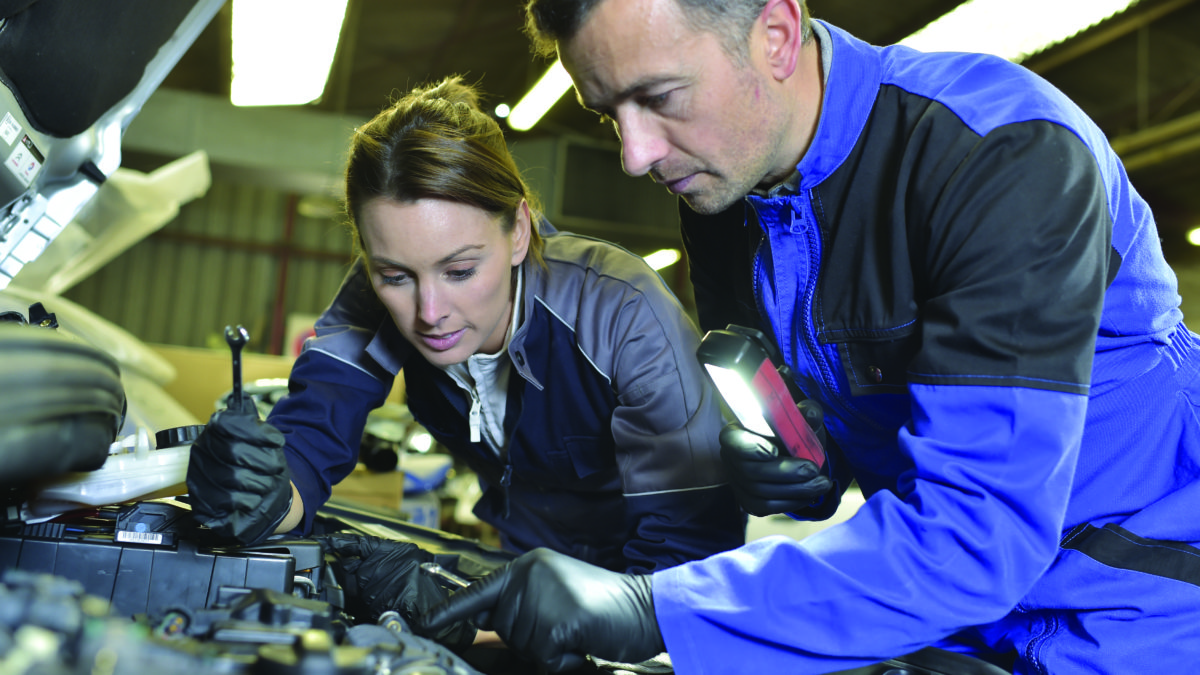Automotive Industry
Sponsored by:
There are more cars on the road today than ever before. According to the Bureau of Transportation Statistics, there were more than 260,000,000 highway vehicles registered in the United States in 2015—a number that’s grown nearly 30 percent in just 20 years. The automotive industry is continually expanding to accommodate the ongoing need for transportation to keep individuals and businesses moving, and it’s continually adapting to meet the needs of new technologies, vehicular maintenance, and the infrastructure that supports a nation of drivers. The Bureau of Labor Statistics (BLS) projects more than 1,300,000 careers in the transportation industry by 2026; that’s over 125,000 job openings expected each year!
If you enjoy working on cars and are looking for a new career path, consider enrolling in a career training program to become an automotive technician. There are many types of programs in the field; let’s look at a few of them!
Automotive Technology
Auto technicians and mechanics maintain and repair cars and light trucks. They perform basic maintenance tasks, including oil changes, fluid checks, tire rotations, and brake servicing. They often specialize in certain systems, like engines, brakes, cooling, or steering. In addition to having a good understanding of the mechanics of how a car and its individual parts function, auto techs must also be prepared to grasp the electrical and computerized systems that allow the vehicle to run smoothly as a whole machine.
Diesel Technician
Diesel vehicles, including buses, trucks, and heavy equipment, require specialized training to keep them running smoothly. According to the BLS, diesel engine maintenance and repair is becoming more complex as engines and other components use more electronic systems to control their operation—like the reliance of fuel injection and engine timing systems on microprocessors to maximize fuel efficiency and minimize harmful emissions. Diesel techs are also often required to use more specialized tools to work on these types of vehicles and typically need additional industry certifications to find employment.
Motorcycle Mechanic
Another specialized area of vehicle maintenance is for the motorcycle, which make up about 20 percent of the registered vehicles in the US, according to the Bureau of Transportation Statistics. As with diesel technicians, motorcycle mechanics are likely to use specialized tools and knowledge to service the equipment differently than they would the average motor vehicle. Training programs will include the same concepts as auto or diesel, but with information specific to small engines: engines, transmissions, brakes, electrical systems, ignition systems, and computerized components.
Collision Repair
As long as there are vehicles on the road, there are bound to be accidents. Collision repair technicians have been trained in structural and non-structural repair, refinishing and painting, and inspections and estimates. Relying on their extensive understanding of how vehicles are supposed to operate, auto repairers review the damage and create a plan to fix it. They can address dents, cracks, scratches, missing parts, and destabilized components. Collision repair techs often specialize in body repair or glass repair.
Does one of these areas sound like a good fit for you? The Imagine America Foundation is here to help you find the program and school that is right for you!
Find more information about these and other training programs for automotive careers through our database of schools: https://www.imagine-america.org/automotive-schools-training-scholarships/.
IAF’s partner institutions even offer a scholarship for high school seniors, active and honorably discharged military personnel, and adult learners.
Leave a Reply Cancel reply
- - ADVERTISEMENT - -
Categories
- Alumni Series (13)
- Automotive (57)
- Aviation (15)
- Business (14)
- Business & Arts (18)
- Career College Expositions (7)
- Career Development (96)
- CCC Blog (1)
- CCC Podcast (9)
- College Resource (90)
- College Showcase – Lincoln Tech (6)
- College Showcase – New Jersey (8)
- College Showcase – Pennco Tech (1)
- College Showcase – Universal Technical Institute (2)
- Continuing Education (154)
- Cosmetology (3)
- Counselor Resources (108)
- Criminal Justice (3)
- Dental Assistant (2)
- Education (109)
- Financial Literacy (17)
- Health Sciences (50)
- Heritage Series (3)
- High School Recruitment Series (4)
- Housing Series (10)
- HVAC (8)
- Imagine America Scholarships (12)
- Information Technology (17)
- Massage Therapy (5)
- Mechanical Sciences (109)
- Medical Assistant (12)
- Millennial Student Series (4)
- News (11)
- Nursing (22)
- Online education (13)
- Pandemic Proof Series (4)
- Personal Finance (17)
- Podcast (90)
- Research (11)
- Road Map Series (2)
- Scholarships (12)
- Social Media Series (4)
- Strata Tech (3)
- Student Success (29)
- Study Tips (3)
- Time Managment (1)
- Top 10 (10)
- Trucking (2)
- Uncategorized (14)
- Universal Technical Institute (19)
- Veteran Affairs (8)
- Welding (24)
- Women in Skilled Trades (3)
Tags
- - ADVERTISEMENT - -


